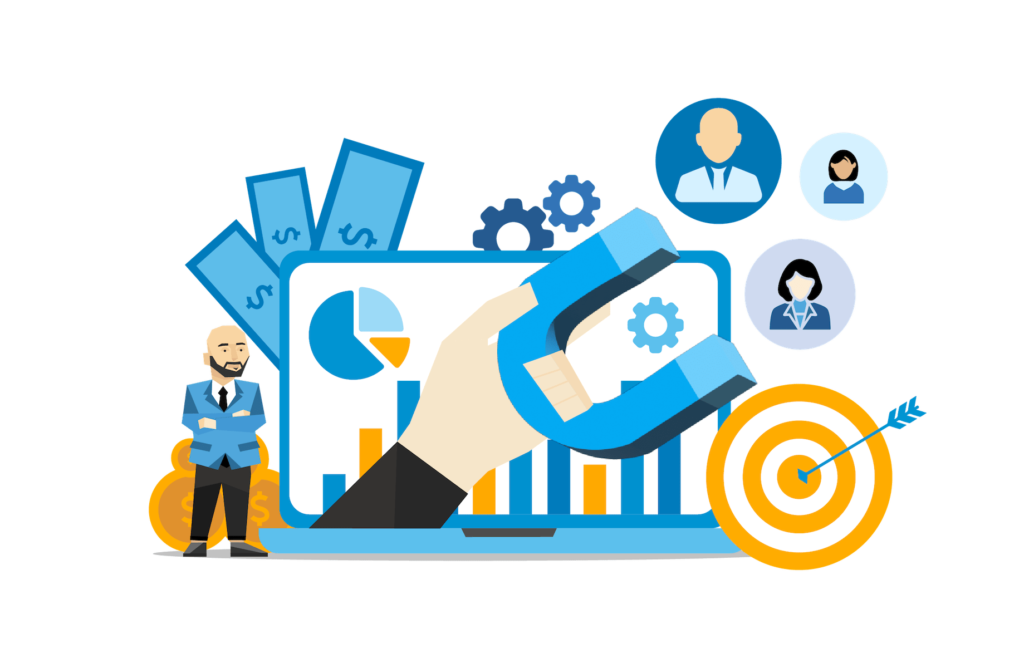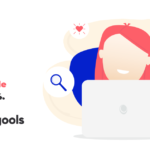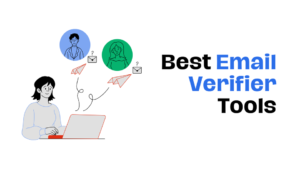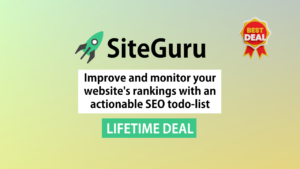Generating traffic is crucial for any website’s success. Without visitors, your site can’t achieve its goals.
Whether you’re a blogger, business owner, or marketer, understanding traffic generation is essential. Traffic generation involves various strategies to attract visitors to your site. These strategies help increase visibility and reach your target audience. From SEO and social media to email marketing and paid ads, the options are vast.
Each method has its unique benefits and can be tailored to your specific needs. In this blog post, we’ll explore effective ways to drive traffic to your website. By the end, you’ll have a clear understanding of how to boost your site’s traffic and reach your goals. By utilizing a combination of SEO, social media marketing, and paid advertising, you can effectively increase your website traffic. With the right strategies in place, you can attract more visitors to your site and ultimately achieve greater success online. Whether you’re a small business owner or a marketing professional, these methods can help you drive the results you’re looking for.
Table of Contents
ToggleIntroduction To Traffic Generation
Website traffic is the foundation of online success. It refers to the number of visitors who visit your site. Understanding traffic generation helps you attract more visitors. This increases your chances of achieving your goals.
Importance Of Website Traffic
Website traffic brings potential customers to your site. More traffic means more opportunities for conversion. Increased traffic can lead to higher sales and revenue. A high volume of traffic can also improve your search engine ranking.
Consistent traffic helps build brand awareness. It can establish your website as an authority in your field. Traffic analysis provides valuable insights into user behavior. This helps you refine your marketing strategies.
Common Traffic Challenges
Many websites struggle with generating consistent traffic. SEO can be complex and time-consuming. Competition is fierce, making it hard to stand out. Content quality is crucial but often overlooked.
Another challenge is keeping visitors engaged. High bounce rates can negatively impact your traffic. Ad fatigue can also reduce the effectiveness of paid campaigns. Understanding these challenges is the first step to overcoming them.
| Challenge | Description |
|---|---|
| SEO Complexity | Understanding and implementing SEO requires time and expertise. |
| High Competition | Standing out among many websites can be tough. |
| Content Quality | Low-quality content fails to attract and retain visitors. |
| Visitor Engagement | Keeping visitors on your site is crucial for success. |
| Ad Fatigue | Overexposure to ads can reduce their effectiveness. |
Seo Optimization
SEO Optimization is crucial for boosting your website’s visibility. It helps you attract more organic traffic from search engines. This section will delve into effective strategies for SEO optimization.
Keyword Research
Keyword research forms the foundation of SEO. Choosing the right keywords can significantly improve your search rankings.
- Identify keywords relevant to your niche.
- Use tools like Google Keyword Planner and Ahrefs.
- Focus on long-tail keywords for better targeting.
Implementing the right keywords will help your content rank higher. Ensure your keywords match user intent. This will improve engagement and conversion rates.
On-page Seo Techniques
On-Page SEO involves optimizing individual web pages. It helps search engines understand your content.
- Use the primary keyword in the title tag.
- Include keywords in the meta description.
- Optimize header tags (H1, H2, H3) with keywords.
- Ensure your content is original and informative.
On-Page SEO also includes using alt text for images. This enhances accessibility and search engine indexing.
Backlink Building
Backlinks are links from other websites to yours. They signal trust and authority to search engines.
- Reach out to influencers in your industry.
- Write guest posts on reputable sites.
- Create valuable content that others want to link to.
Building high-quality backlinks will improve your domain authority. This will lead to better rankings and more traffic.
Content Marketing
Content marketing is a powerful way to generate traffic. It involves creating valuable and relevant content to attract and engage your audience. This strategy helps build trust and authority, driving more visitors to your website.
Blogging Strategies
Effective blogging strategies can significantly boost your traffic. Here are some tips:
- Keyword Research: Use tools like Google Keyword Planner to find popular search terms.
- Quality Content: Create informative and engaging posts that solve problems for your readers.
- Consistent Posting: Maintain a regular posting schedule to keep your audience engaged.
- SEO Optimization: Optimize your blog posts with relevant keywords, meta descriptions, and internal links.
- Engage with Readers: Respond to comments and encourage discussions to build a community.
Guest Posting
Guest posting on other blogs can drive traffic to your site. Here’s how:
- Identify Target Blogs: Find blogs in your niche with a good following.
- Pitch Relevant Topics: Offer to write about topics that align with the blog’s audience.
- Include Backlinks: Add links to your site within the guest post to direct traffic back to you.
- Promote Your Post: Share the guest post on your social media channels to reach a broader audience.
- Build Relationships: Maintain good relationships with blog owners for future opportunities.
Infographics And Visuals
Infographics and visuals can make your content more engaging. They can also boost traffic. Consider these tips:
| Tip | Description |
|---|---|
| Create Shareable Infographics | Design infographics that are easy to share on social media. |
| Use High-Quality Images | Include high-resolution images in your posts to make them visually appealing. |
| Optimize for SEO | Use alt text and proper file names for your images to improve search engine rankings. |
| Embed Videos | Incorporate videos to provide a rich media experience for your audience. |
.jpg?6.0)
Credit: www.itetripgen.org
Social Media Promotion
Social media promotion is key to driving traffic to your website. With billions of users on various platforms, it’s a goldmine for attracting potential visitors. This section covers how to effectively use social media to boost your traffic.
Platform Selection
Choosing the right platform is crucial. Not all platforms will suit your brand. Here’s a simple table to guide you:
| Platform | Best For |
|---|---|
| Broad audience, diverse content | |
| Visual content, younger audience | |
| Professional content, B2B marketing | |
| Real-time updates, news |
Content Scheduling
Consistency is key in social media promotion. Use a content calendar to plan your posts. Tools like Buffer or Hootsuite can help you schedule posts in advance. Aim for regular posting to keep your audience engaged.
Here’s a simple weekly schedule:
- Monday: Blog post
- Wednesday: Infographic
- Friday: Video
Engagement Tactics
Engagement is more than just posting content. Respond to comments and messages promptly. Use polls and questions to interact with your audience. Create shareable content to increase reach.
Here are some effective tactics:
- Reply to comments within 24 hours.
- Ask questions in your posts.
- Host live sessions.
- Share user-generated content.
Email Marketing
Email marketing is a vital strategy for generating website traffic. It allows businesses to reach their audience directly. With email marketing, you can send personalized messages, promotions, and updates. This keeps your audience engaged and informed. Below, we explore key aspects of effective email marketing.
Building An Email List
Building an email list is the first step in email marketing. Start by creating a sign-up form on your website. Offer an incentive to encourage sign-ups. This could be a discount, a free eBook, or exclusive content. Ensure the form is simple and easy to fill out.
Use social media to promote your sign-up form. Share the link on your profiles and posts. Run ads to reach a wider audience. Collaborate with influencers to expand your reach.
Segment your email list based on user behavior and preferences. This helps in sending targeted and relevant content. An organized list is crucial for effective email marketing.
Crafting Effective Newsletters
Crafting effective newsletters is key to keeping your audience engaged. Start with a catchy subject line. This determines whether your email gets opened. Keep it short and intriguing.
Personalize your newsletters. Use the recipient’s name and tailor the content to their interests. Include valuable information, promotions, and updates about your business.
Make your emails visually appealing. Use images, videos, and infographics. Ensure your design is mobile-friendly. Many users open emails on their phones.
Include a clear call-to-action (CTA). Guide your readers on what to do next. This could be visiting your website, making a purchase, or sharing your content.
Automation Tools
Automation tools can streamline your email marketing efforts. They help in sending timely and personalized emails. Some popular tools include Mailchimp, ConvertKit, and ActiveCampaign.
With automation, you can set up welcome emails for new subscribers. Send follow-up emails based on user actions. For example, if a user abandons their cart, send a reminder email.
Use analytics to track the performance of your emails. Monitor open rates, click-through rates, and conversions. Adjust your strategy based on the data.
Automation tools save time and ensure consistency. They help you maintain regular communication with your audience. Choose a tool that fits your needs and budget.
Paid Advertising
Paid advertising is a powerful way to drive traffic to your site. It helps to reach a specific audience quickly. Paid ads can be targeted and measured, ensuring you get the best return on investment (ROI). Below, we explore some effective paid advertising methods.
Google Ads
Google Ads is a robust platform. It allows you to display ads on Google search results and its network. You can target users based on keywords, location, and demographics. This ensures your ads reach the right people.
A major benefit is the pay-per-click (PPC) model. You only pay when someone clicks on your ad. This makes it cost-effective. Also, you can set a daily budget to control your spending.
Here is a simple breakdown of the benefits of Google Ads:
| Benefit | Explanation |
|---|---|
| Targeted Audience | Reach users based on specific criteria. |
| Cost Control | Set a daily budget to manage expenses. |
| Measurable Results | Track performance with detailed analytics. |
Social Media Ads
Social media ads allow you to reach users on platforms like Facebook, Instagram, Twitter, and LinkedIn. These ads can be highly targeted. You can choose audiences based on interests, behaviors, and demographics.
Social media ads are visual and engaging. They can include images, videos, and interactive elements. This makes them effective in capturing attention.
Consider these platforms for your social media ads:
Retargeting Campaigns
Retargeting campaigns are a smart way to re-engage visitors. These visitors have shown interest in your website but did not convert. Retargeting uses cookies to track visitors and show them your ads on other sites.
This keeps your brand top of mind. It increases the chances of conversion. Retargeting can be used on various platforms like Google, Facebook, and more.
Steps to set up a retargeting campaign:
- Add a retargeting pixel to your website.
- Define your audience segments.
- Create compelling ads.
- Monitor and optimize your campaigns.
By using these paid advertising methods, you can effectively drive more traffic to your website. Each method offers unique benefits that can help you reach your marketing goals.
Collaborations And Partnerships
Collaborations and partnerships are crucial for traffic generation. By teaming up with others, you can reach a wider audience. This strategy can bring immense value to your business. Below are some effective methods to drive traffic through collaborations and partnerships.
Influencer Marketing
Influencer marketing involves working with individuals who have a large following. These influencers can promote your brand to their audience. This increases your visibility and attracts more visitors to your site.
Consider these steps:
- Identify relevant influencers in your niche.
- Reach out with a clear collaboration proposal.
- Offer value in exchange for their promotion.
Keep in mind, influencers’ audience trust their recommendations. This makes influencer marketing an effective traffic generation tool.
Affiliate Programs
Affiliate programs involve partnering with individuals or businesses. They promote your products and earn a commission for each sale. This can be a win-win situation.
Here’s how to set up an affiliate program:
- Define your commission structure.
- Create an easy-to-use affiliate portal.
- Provide marketing materials to affiliates.
Affiliate programs motivate partners to drive traffic to your site. They benefit from the commission, and you get more visitors.
Joint Ventures
Joint ventures involve partnering with another business. Both parties benefit from the collaboration. This can help you reach new markets.
Steps to initiate a joint venture:
- Identify potential business partners.
- Propose a mutually beneficial project.
- Define roles and responsibilities clearly.
Joint ventures can be long-term or project-specific. They can boost your traffic significantly.
Analyzing Traffic Data
Analyzing traffic data is crucial for understanding your website’s performance. By examining visitor behavior, you can identify trends, spot weaknesses, and improve your strategies. This section will guide you through using Google Analytics, tracking key metrics, and adjusting strategies based on your findings.
Using Google Analytics
Google Analytics is a powerful tool for tracking website traffic. It provides detailed insights into your audience and their behaviors. To start, install the Google Analytics tracking code on your website.
- Go to Google Analytics and sign in.
- Create a new property for your website.
- Get the tracking code and add it to your site’s HTML.
Once set up, Google Analytics will begin collecting data. You can view metrics like page views, session duration, and bounce rates. This data helps you understand how visitors interact with your site.
Tracking Key Metrics
Tracking key metrics is essential for measuring your website’s success. Here are some important metrics to monitor:
| Metric | Description |
|---|---|
| Page Views | The number of times a page is viewed. |
| Session Duration | The average time visitors spend on your site. |
| Bounce Rate | The percentage of visitors who leave after viewing one page. |
| Traffic Sources | Where your visitors come from (e.g., search engines, social media). |
Use these metrics to gauge your site’s performance. Identify areas for improvement by comparing current data with past performance.
Adjusting Strategies
Based on the data, adjust your strategies to improve traffic. Here are some steps:
- Identify pages with high bounce rates. Improve their content.
- Analyze traffic sources. Focus on the most effective channels.
- Test different content types. See which ones perform best.
- Use A/B testing. Experiment with different layouts and features.
Regularly review your data. Make informed decisions to enhance your website’s performance.
Conclusion And Next Steps
In this section, we will wrap up our discussion on traffic generation. We will revisit the strategies we have discussed. Then, we will outline an action plan for you to follow. Finally, we will emphasize the importance of continuous learning in improving your traffic generation efforts.
Recap Of Strategies
Let’s quickly recap the key strategies we have covered:
- Creating high-quality, engaging content
- Utilizing social media platforms effectively
- Optimizing your website for search engines (SEO)
- Leveraging email marketing campaigns
- Engaging in guest blogging and collaborations
These strategies are crucial for driving traffic to your website.
Action Plan Development
To develop an effective action plan, follow these steps:
- Identify your target audience and their preferences.
- Set clear, measurable goals for your traffic generation efforts.
- Create a content calendar to ensure consistent posting.
- Allocate resources for social media and email marketing.
- Monitor your progress and adjust your strategies as needed.
Having a structured plan will help you stay focused and on track.
Continuous Learning
Traffic generation is an ongoing process. To stay ahead, you must commit to continuous learning. Here are some tips:
- Stay updated with the latest SEO trends and algorithms.
- Attend webinars and workshops on digital marketing.
- Join online communities and forums to exchange ideas.
- Read industry blogs and publications regularly.
By staying informed and adaptable, you can enhance your traffic generation efforts.

Credit: brame.io

Credit: www.linkedin.com
Are the Strategies for Boosting Website Traffic in Both Articles Similar?
Yes, the strategies for boosting website traffic in both articles are similar. Creating high-quality content, using targeted keywords, optimizing for SEO, and promoting through social media are all effective methods to boost website traffic. Additionally, guest blogging and collaborating with influencers can also help increase visibility and drive more traffic to your website.
What Are the Most Effective Strategies for Boosting Website Traffic?
Looking for proven boost website traffic strategies? Consider optimizing your website content with relevant keywords, utilizing social media to promote your site, and guest posting on high-traffic blogs. Additionally, investing in paid advertising and email marketing can help drive more visitors to your website. And don’t forget the power of search engine optimization (SEO) to improve your website’s visibility in search results. By consistently creating high-quality content and building backlinks from reputable sources, you can further boost website traffic. Implementing these strategies in tandem can result in a significant increase in your site’s visibility and ultimately drive more traffic to your website. Moreover, focusing on organic reach solutions such as creating shareable and engaging content, leveraging user-generated content, and participating in relevant online communities can also help increase website traffic. By building a strong online presence and providing value to your target audience, you can attract more organic traffic to your site. It’s important to continuously analyze your website traffic data to fine-tune your strategies and ensure sustained growth in your site’s visibility and traffic.
Frequently Asked Questions
What Is Traffic Generation?
Traffic generation is the process of attracting visitors to your website. It involves various strategies like SEO, social media, and content marketing.
Why Is Traffic Generation Important?
Traffic generation is crucial for increasing website visibility. More traffic can lead to higher engagement, conversions, and revenue for your business.
How Can I Generate Website Traffic?
You can generate traffic through SEO, social media marketing, content creation, email marketing, and paid advertising. Consistency is key.
What Are The Best Traffic Generation Tools?
Some top tools for traffic generation include Google Analytics, SEMrush, Ahrefs, and Hootsuite. These tools help in tracking and optimizing your efforts.
Conclusion
Boosting traffic takes strategy and consistent effort. Quality content attracts readers. Social media shares help reach wider audiences. SEO practices improve visibility on search engines. Engaging with your audience builds trust and loyalty. Analyzing data helps refine your tactics. Experiment with different methods.
Stay patient and persistent. Traffic will grow over time. Keep learning and adapting. Your efforts will pay off.








